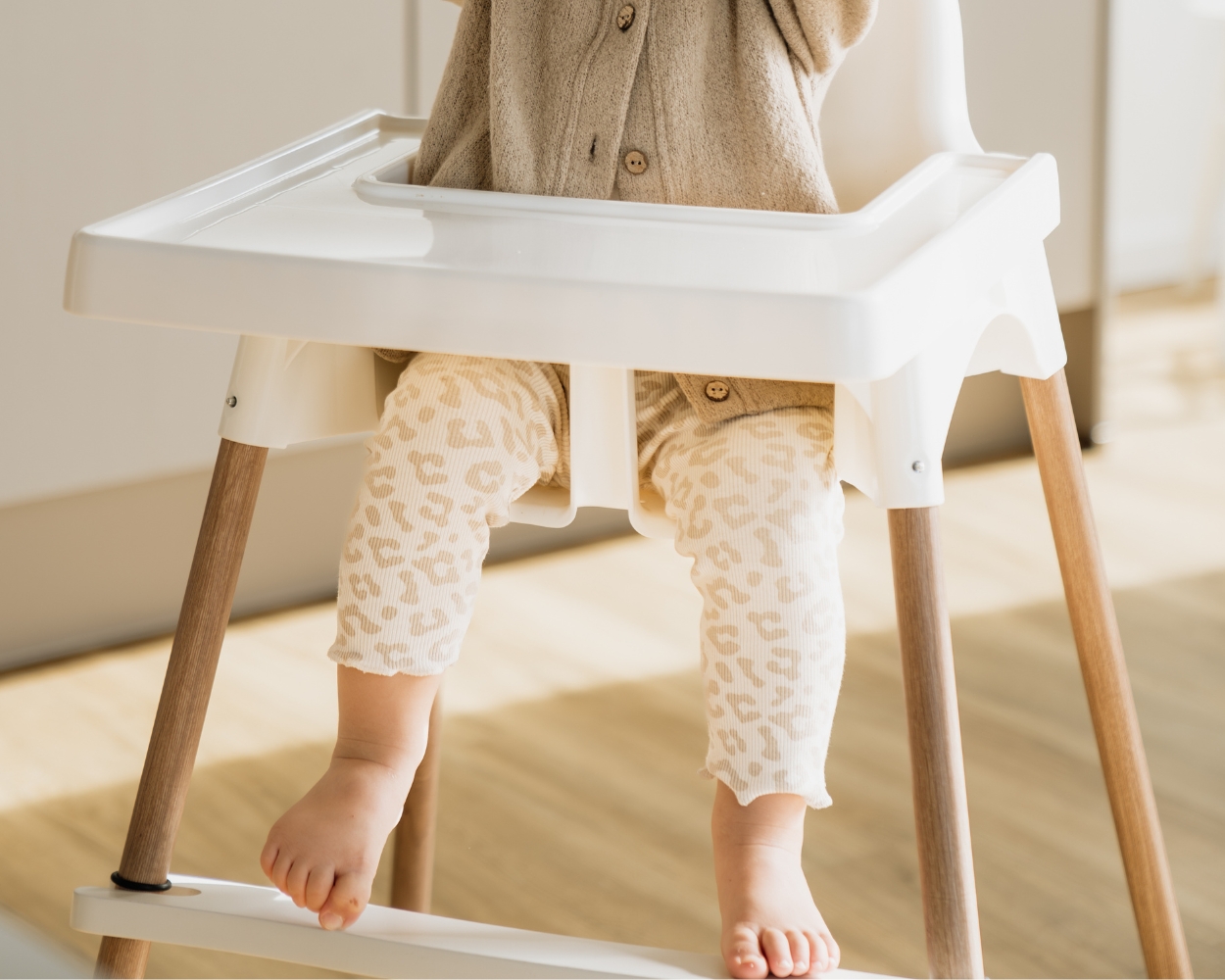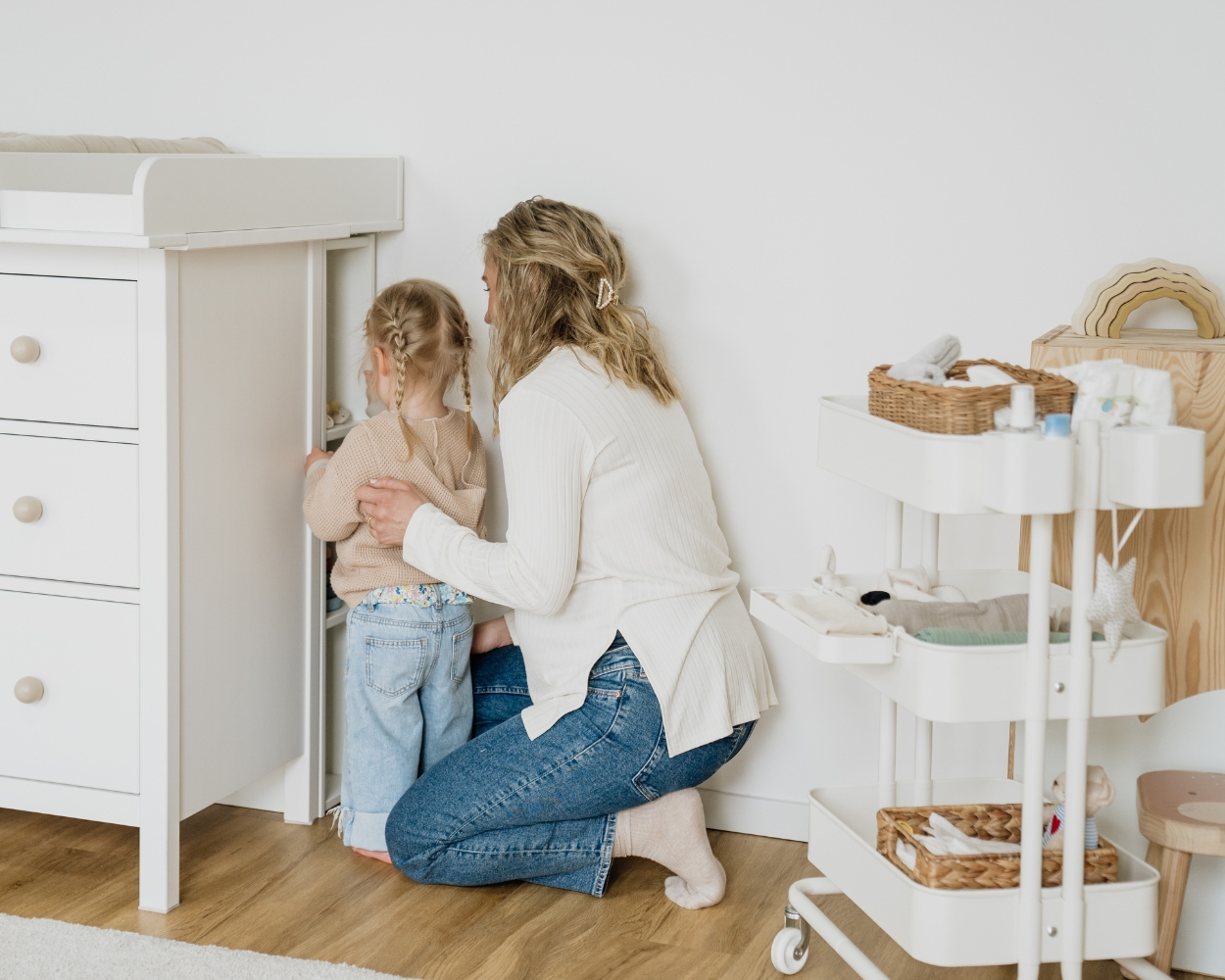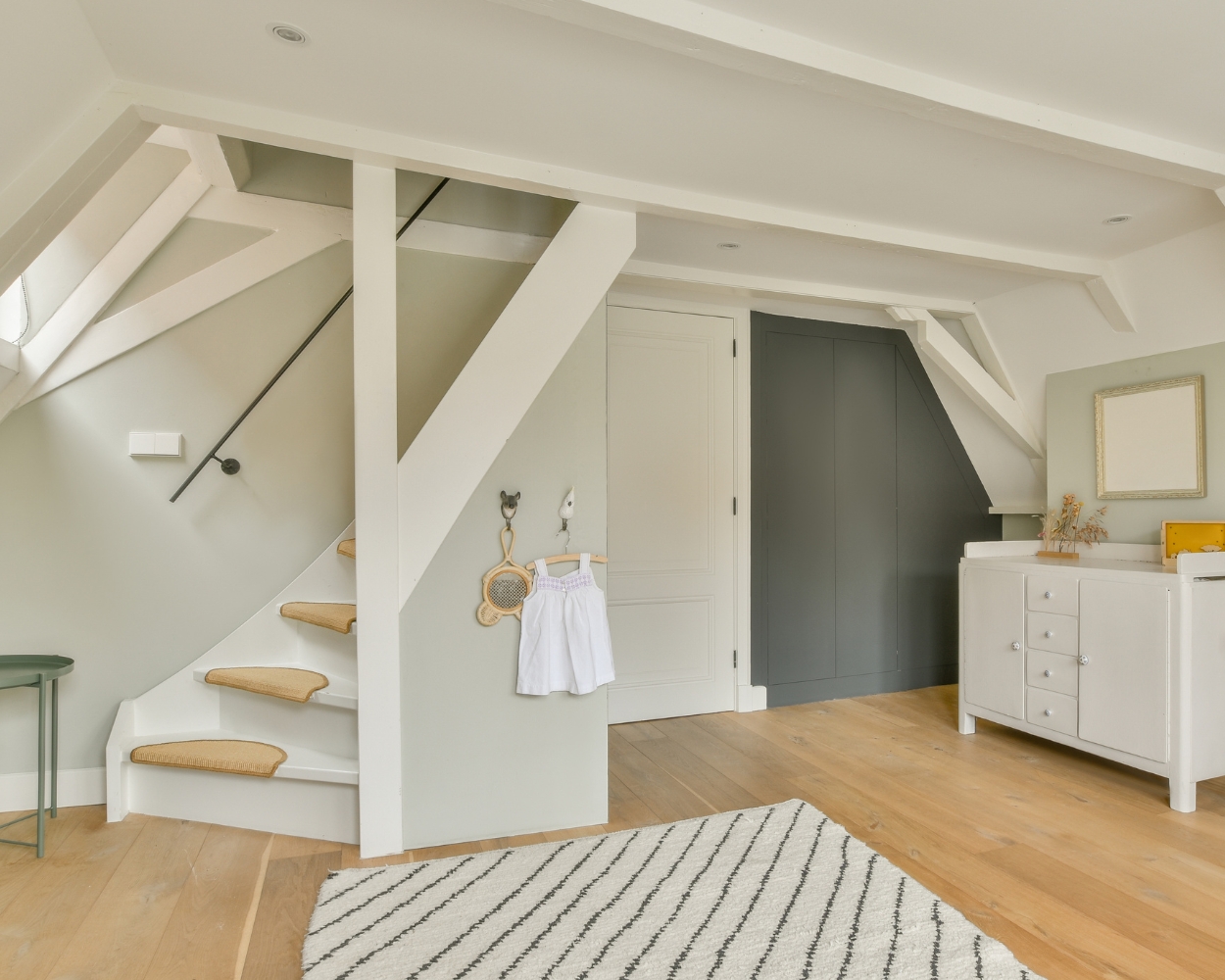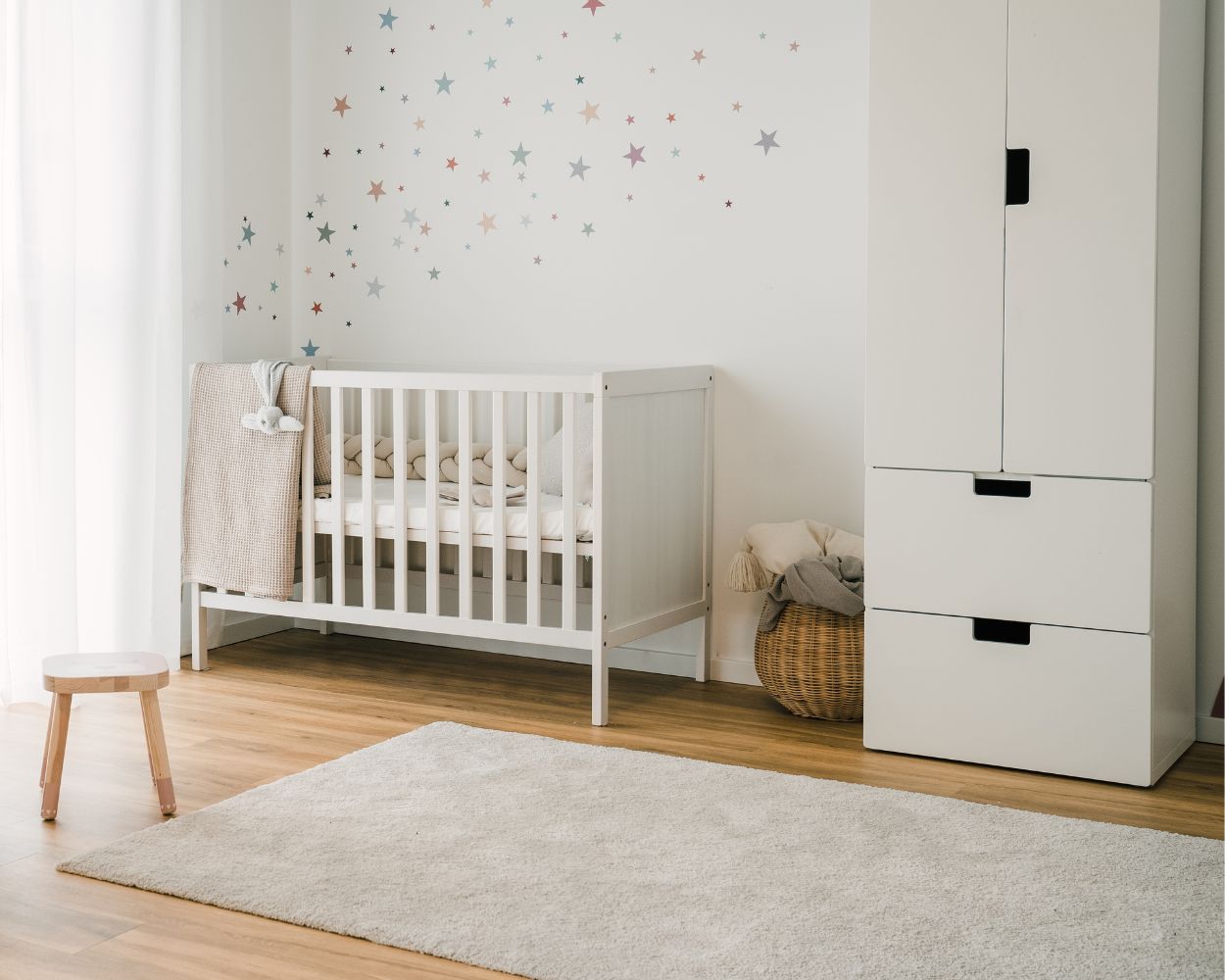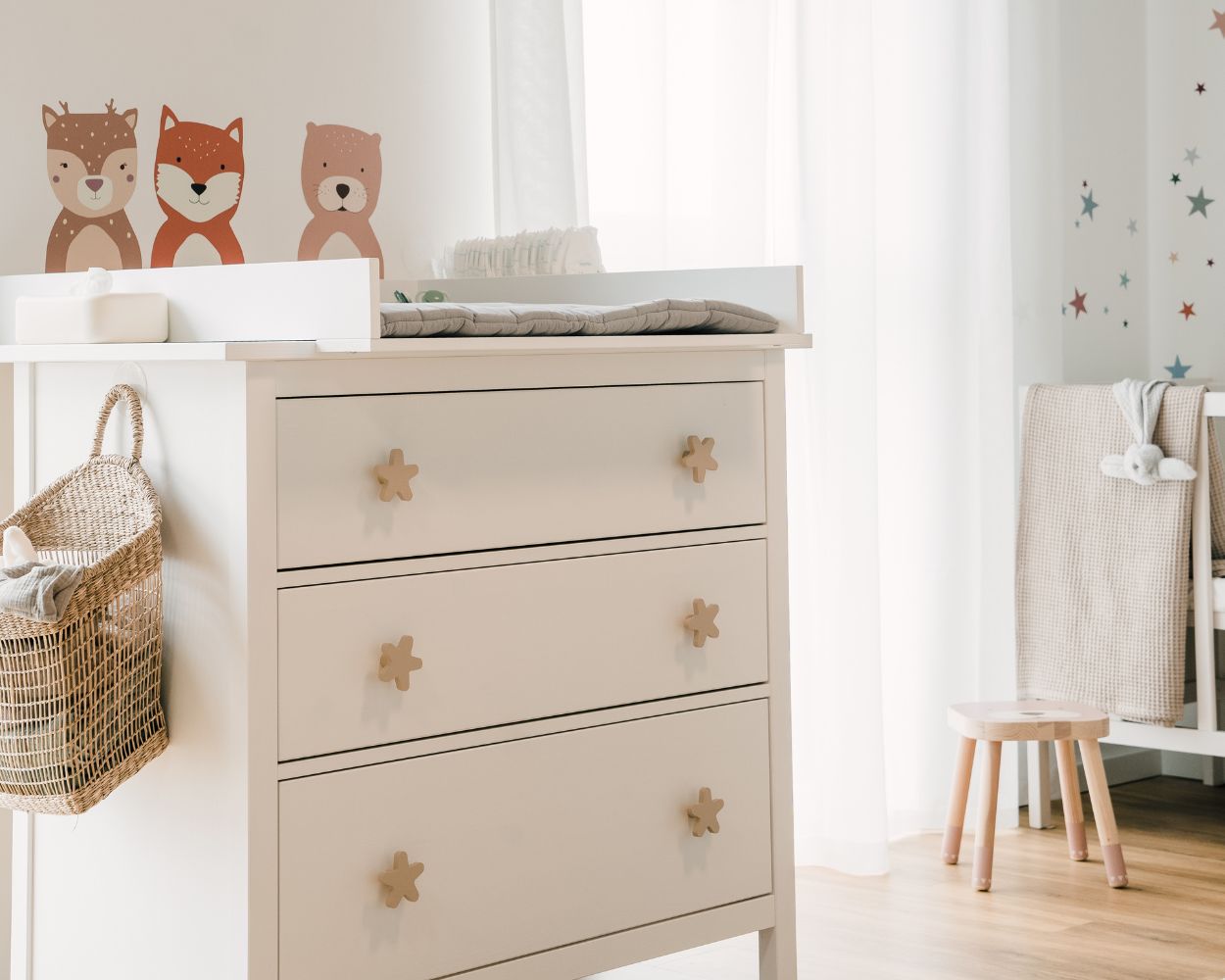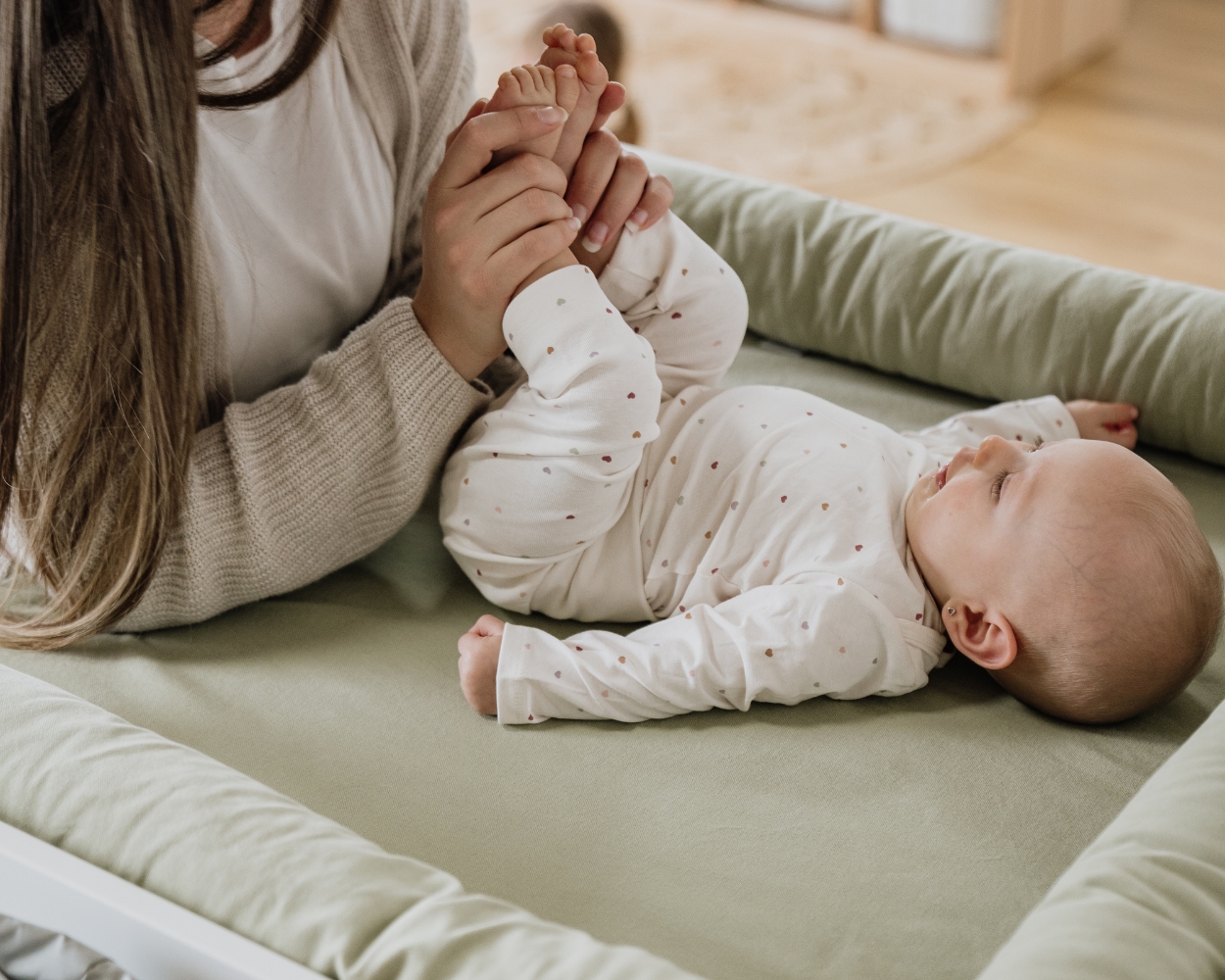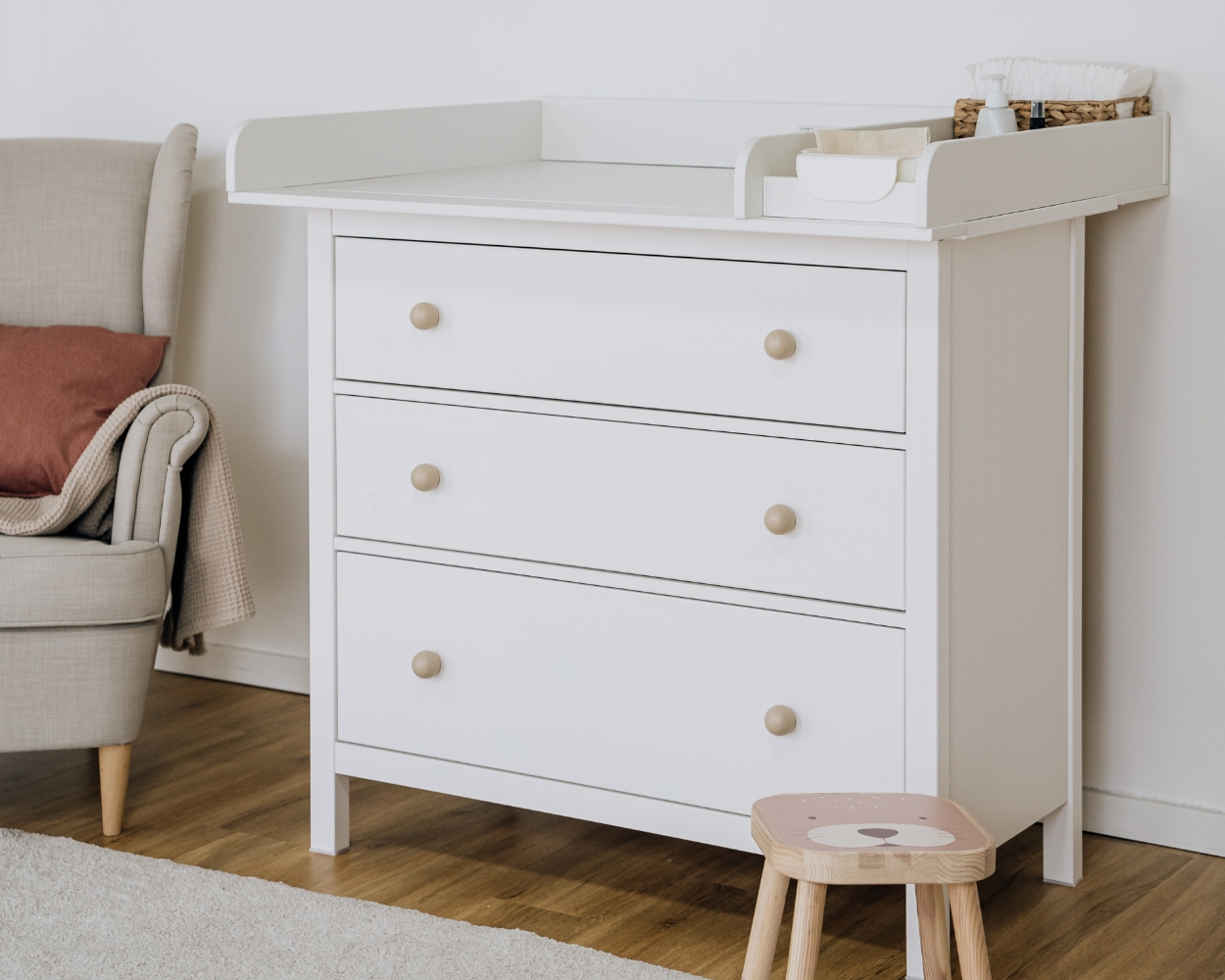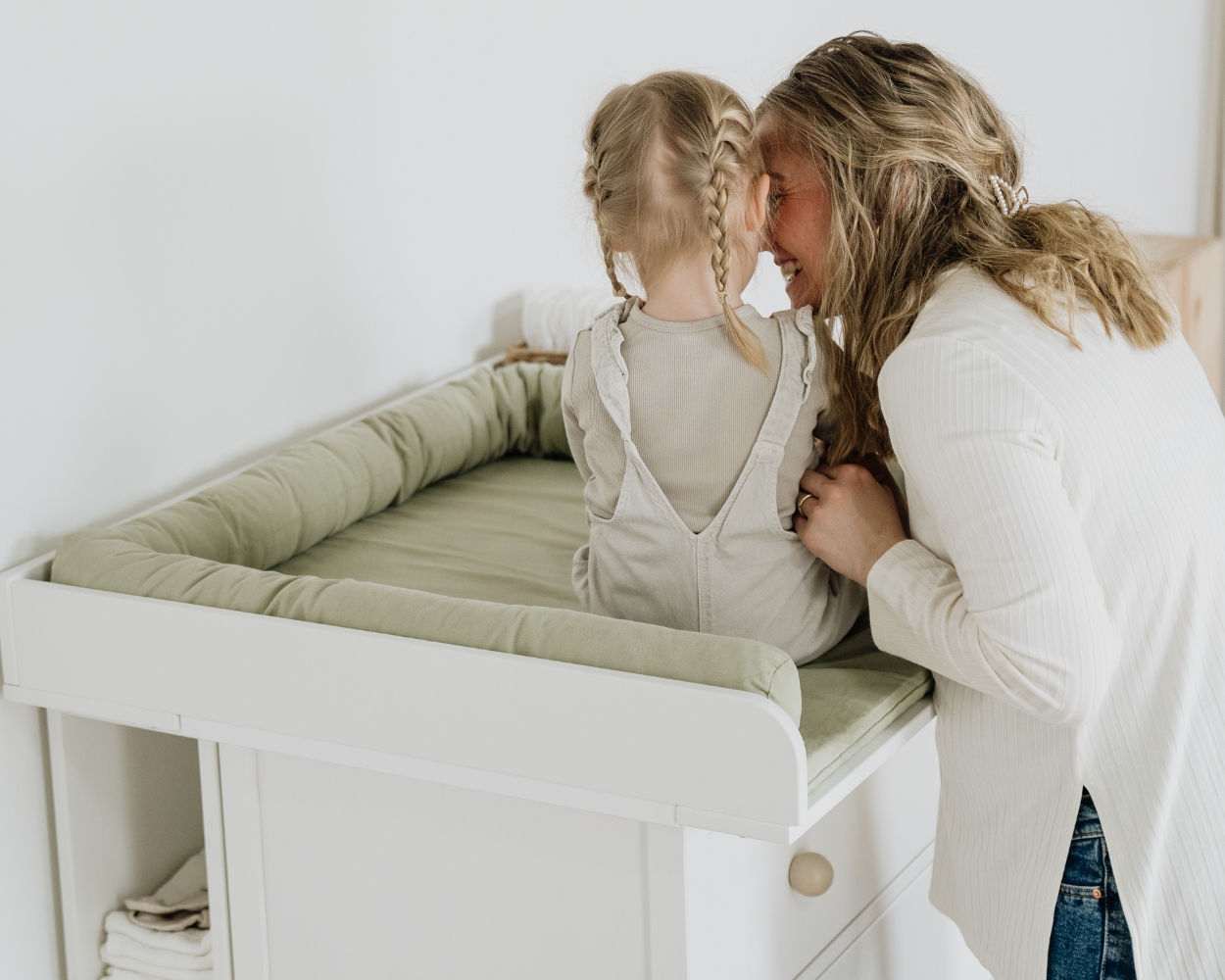
The perfect dimensions for your changing unit
The changing unit guide: Height, dimensions and location of your changing unit - so everything fits!
The right height, width and optimal location of your changing unit have a huge impact on how relaxed and ergonomic your nappy changing can be. If the changing table is too low, back pain is inevitable - if the space is too narrow, chaos quickly ensues. To help you set up the perfect changing area, you can find out here which dimensions and changing heights are ideal and where the changing unit is best positioned in the baby's room. This will help you create a safe, well-structured and stress-free changing area - for you and your baby.
1. How high should your changing unit be?
You can easily measure the optimum height and dimensions of the changing unit: The distance between your elbow and the changing surface should be 10-15 cm for an ergonomic changing height. Measure the height from the floor to your elbow and subtract 10-15 cm from this. Now you know the perfect height for your changing station without back pain.
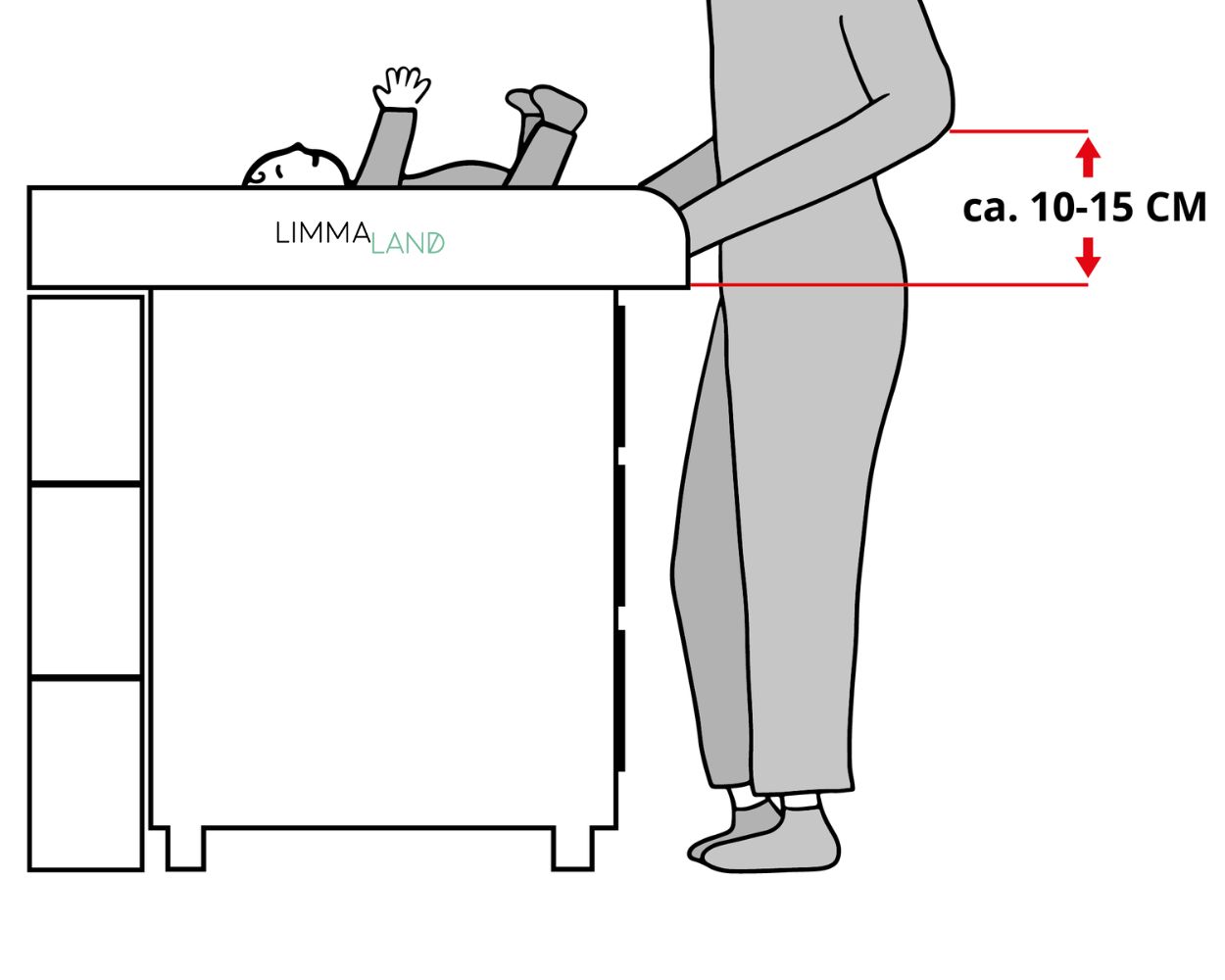
2. How big should the changing surface be?

3. The ideal location for the changing unit
Your changing table should be in a well-ventilated room with good lighting and a pleasant room temperature. The chest of drawers should also be accessible from all sides to make nappy changing as easy and comfortable as possible. If your bathroom is large enough, you have the advantage of having quick access to the tap. However, the changing unit also looks great in the bedroom or nursery. Make sure there is a socket nearby. This way, you can easily integrate a hairdryer or a heat lamp at your nappy-changing station.
Tips for setting up & organising your changing unit
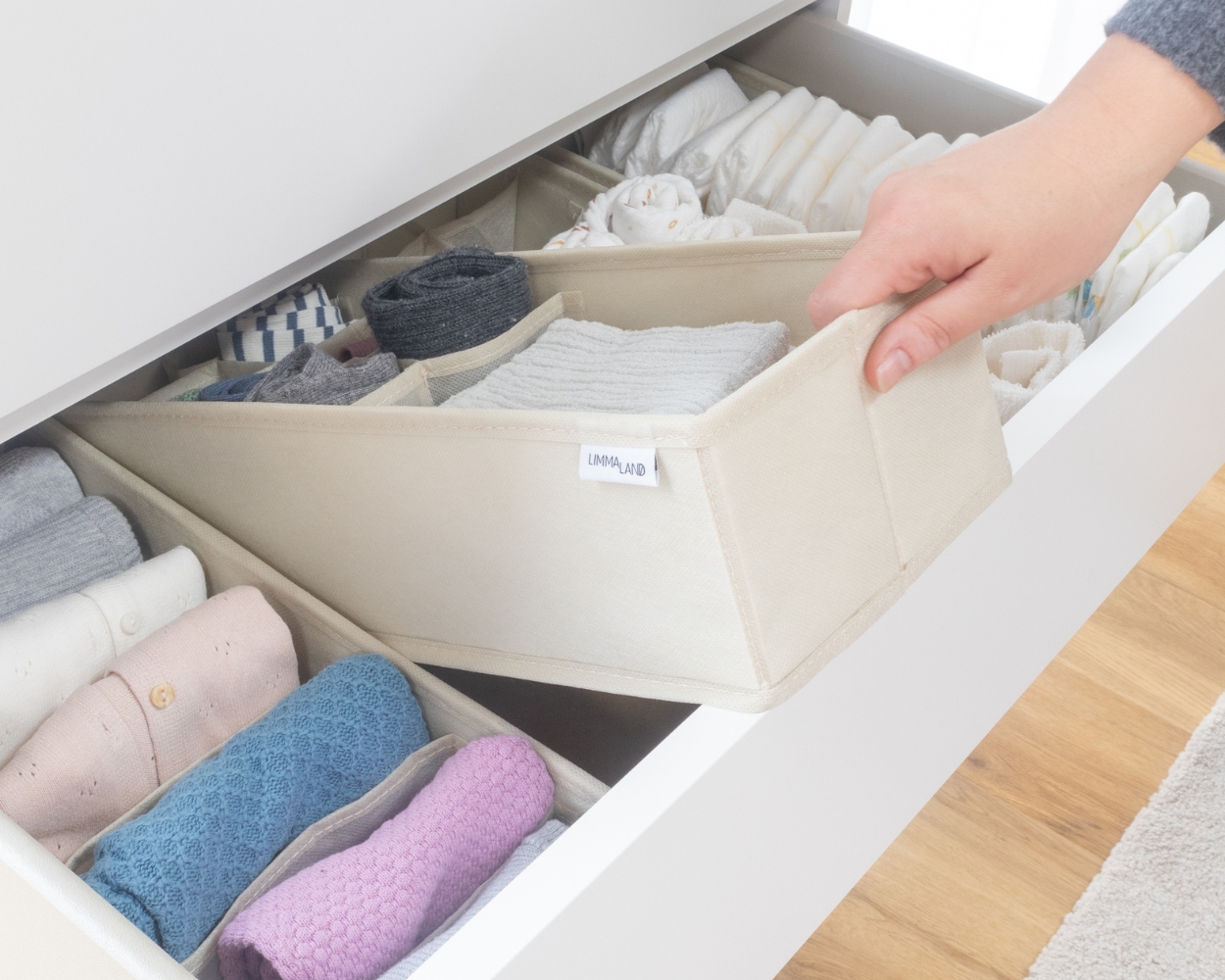
Practical organiser for your changing unit
You can use our clever organisers to make the most of the space on your drawer chest of drawers. These fit perfectly in the HEMNES and the MALM chest of drawers. The clothes are sorted upright - so everything is visible and ready to hand at a glance and you stay relaxed when changing nappies.

